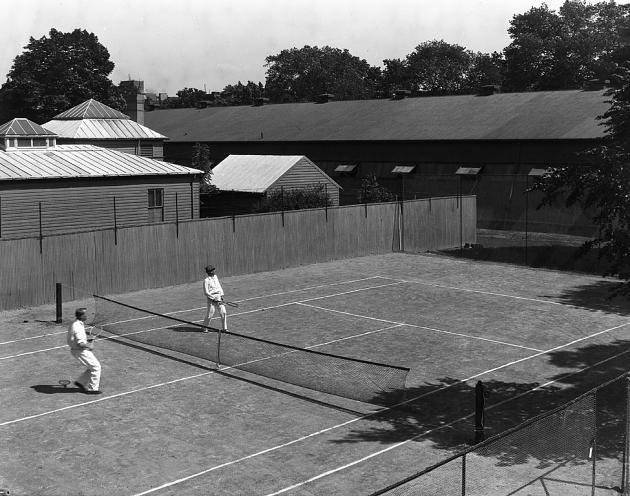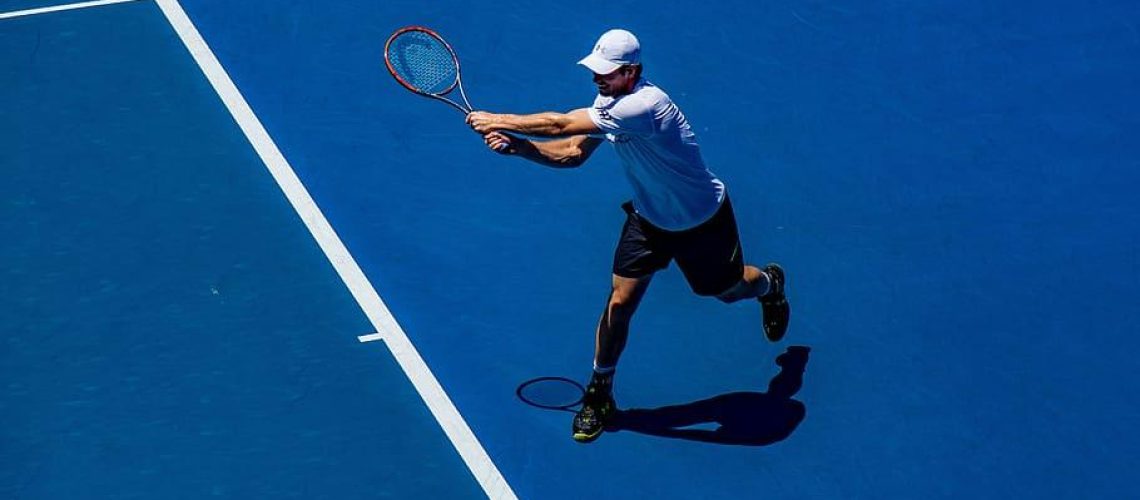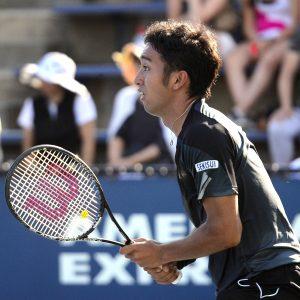We may earn money or products from the companies mentioned in this post.
Introduction

Tennis is a sport that requires not only physical strength and agility, but also mental focus and consistency Consistency in tennis refers to the ability to execute shots accurately and effectively throughout a match It plays a crucial role in determining the outcome of matches and overall performance on the court
Importance of Consistency in Tennis
Consistency is vital in tennis for two main reasons: winning more matches and improving overall performance When a player can consistently hit shots with precision, it puts them at an advantage over their opponents This leads to winning more points, games, sets, and ultimately matches
In addition to winning matches, consistency helps players improve their overall performance It allows them to develop a rhythm and flow during play, leading to better shot selection and execution By maintaining consistency, players can reduce unforced errors and increase their chances of winning critical points
Common Challenges Faced by Players
While consistency is crucial in tennis, many players face challenges when trying to maintain it throughout a match One common challenge is maintaining focus during intense rallies or pressure situations The ability to stay mentally present on each point can be difficult when faced with distractions or pressure from the opponent
Another challenge for players is developing proper technique that supports consistent play Tennis strokes require precise timing, balance, and coordination Without a solid foundation of technique, players may struggle to execute shots consistently and efficiently
In conclusion, consistency in tennis is essential for both winning more matches and improving overall performance However, it comes with its fair share of challenges such as maintaining focus during matches and developing proper technique By addressing these challenges head-on and prioritizing consistent practice and mental preparation, players can enhance their abilities on the court
Developing Consistency through Technical Skills and Drills

Consistency is a key factor in achieving success in any sport, and tennis is no exception To develop consistency on the court, players must focus on honing their technical skills through targeted drills This article will explore some essential aspects of developing consistency in tennis, including proper stance and footwork, mastering stroke techniques, and incorporating specific drills into training routines
Proper Stance and Footwork
In tennis, a player’s stance and footwork lay the foundation for successful shot-making Maintaining a balanced body position allows for optimal movement and positioning on the court By starting with a solid stance, players are better equipped to execute shots accurately and with power
Efficient footwork is equally crucial for maintaining consistency in tennis When faced with fast-paced shots from opponents, being able to reach the ball quickly and accurately can make all the difference By practicing specific footwork patterns during training sessions, players can improve their agility, speed, and overall court coverage
Mastering Stroke Techniques
To achieve consistency in groundstrokes such as forehands and backhands, it is vital to master proper stroke techniques This includes using correct grips that provide better control over the racket while generating power behind each shot
Additionally, focusing on follow-through after striking the ball plays a significant role in increasing shot accuracy A smooth follow-through helps maintain balance throughout the swing, ensuring that shots land where intended consistently
Serving techniques also contribute significantly to overall consistency on the court Tossing the ball consistently at an appropriate height allows players to have greater control over their serves Moreover, working on proper serving motion not only improves accuracy but also helps generate power behind each serve
Drills to Improve Consistency in Shots
Practicing targeted drills is an effective way to enhance consistency in tennis shots Cross-court drills, for example, help build muscle memory and aid players in hitting shots consistently within a specific target area By repeatedly executing shots from one side of the court to the other, players develop muscle memory that allows for more accurate and controlled shot-making
Depth control drills are also beneficial for improving shot placement and consistency These drills focus on hitting shots with varying degrees of depth, challenging players to adjust their swing and footwork accordingly By practicing these drills regularly, players can fine-tune their ability to place shots precisely at desired depths on the court
In conclusion, developing consistency in tennis requires a combination of technical skills and targeted training exercises By focusing on proper stance and footwork, mastering stroke techniques, and incorporating specific drills into training routines, players can enhance their overall performance on the court while maintaining consistency in their shots
Mental Strategies for Enhanced Focus and Consistency

When it comes to performing at your best on the court, mental preparation is just as important as physical training One effective way to mentally prepare yourself before a match is by developing pre-match routines These routines help you get into the right mindset and set the stage for a successful performance
1 Deep Breathing Exercises
Deep breathing exercises are a simple yet powerful technique that can help calm your mind and focus your attention Taking slow, deep breaths activates the body’s relaxation response, reducing stress and anxiety Incorporating deep breathing into your pre-match routine can help you feel more centered and prepared to face any challenges that come your way
2 Visualization Techniques
Visualization involves creating vivid mental images of successfully executing specific skills or achieving desired outcomes By visualizing yourself performing well on the court, you enhance muscle memory and build confidence in your abilities Including visualization exercises in your pre-match routine can boost your focus, increase self-belief, and improve overall consistency during matches
Staying Focused during Matches

While pre-match preparation sets the foundation for success, staying focused during matches is crucial for maintaining consistency throughout gameplay Here are two effective strategies to help you stay locked in:
1 Self-Talk Strategies to Stay Positive
The way you talk to yourself has a profound impact on your performance Positive self-talk involves replacing negative thoughts with encouraging statements that motivate and uplift you By consciously monitoring and redirecting your inner dialogue, you can cultivate resilience, maintain focus, and overcome challenges with a positive mindset
2 Setting Short-Term Achievable Goals within Each Game
To maintain focus on the court, it’s important to have clear objectives By setting short-term, achievable goals within each game, you create a roadmap for success Breaking down the match into smaller milestones not only keeps you engaged but also provides a sense of accomplishment as you tick off each goal This approach helps maintain focus and consistency throughout the entire match
Managing Stress and Emotions on Court

Tennis can be an emotionally charged sport, and managing stress and emotions is crucial for staying focused and consistent Here are two strategies to help you navigate this aspect:
1 Learning How to Release Tension after Setbacks
Setbacks are inevitable in any competitive sport, but how you handle them determines your ability to bounce back Learning techniques such as deep breathing, progressive muscle relaxation, or engaging in brief mindfulness exercises can help release tension and reset your focus after setbacks This allows you to maintain composure and perform at your best despite challenges
2 Recognizing Triggers that Lead to Loss of Focus or Concentration
Each player has unique triggers that can disrupt their concentration during matches It could be negative self-talk, external distractions, or specific opponent behaviors By identifying these triggers through self-reflection or seeking guidance from a coach or sports psychologist, you can develop strategies to minimize their impact on your focus and concentration during matches
Creating an Optimal Training Plan for Long-Term Consistency Improvement

Consistency is the key to success in any sport, and tennis is no exception To become a more consistent tennis player, it’s crucial to design a training plan that covers all aspects of the game This includes technical drills to improve your strokes, physical conditioning to enhance your fitness level, and mental training to sharpen your focus and resilience on the court
Incorporating these three elements into your practice routine will help you develop a well-rounded skill set that translates into consistent performance during matches By dedicating time to each aspect and striking a balance between them, you’ll create a foundation for long-term improvement
Designing a Balanced Practice Schedule
The first step in creating an optimal training plan is designing a balanced practice schedule This involves allocating time for technical drills, physical conditioning exercises, and mental training sessions
Technical drills should focus on improving specific aspects of your game, such as forehand technique or backhand volleys By dedicating regular practice sessions to these drills, you’ll gradually refine your skills and enhance muscle memory
In addition to technical drills, incorporating physical conditioning exercises into your training plan is essential for overall fitness and injury prevention These can include strength training exercises, cardiovascular workouts, agility drills, and flexibility routines
Mental training is often overlooked but plays a crucial role in consistency improvement Incorporate mindfulness techniques or visualization exercises into your routine to boost focus and concentration during matches
Lastly, it’s important not to overlook rest days when designing your practice schedule Allowing yourself time off from intense training prevents burnout and gives your body the opportunity to recover fully
Setting Realistic Goals and Tracking Progress
Setting realistic goals is vital for long-term consistency improvement By identifying specific areas of your game that need work, you can set achievable targets to focus on during training
Regularly evaluate your progress by monitoring key performance indicators and making adjustments to your training plan accordingly This could include tracking match statistics, analyzing video footage of your matches, or seeking feedback from a coach or mentor
Seeking Advice from Experts
Seeking advice from experts in the sport can provide valuable insights and help accelerate your progress Working with a coach or mentor who has experience in developing consistent players can offer personalized guidance tailored to your needs
In addition to individual coaching, attending workshops, camps, or clinics can expose you to new techniques and strategies used by top players These learning opportunities provide a chance to refine your skills and gain fresh perspectives on the game
By incorporating these strategies into your training plan, you’ll be well on your way to becoming a more consistent tennis player over time Consistency doesn’t happen overnight but with dedication, perseverance, and the right training approach, you’ll see improvements in your game that will elevate it to the next level
Useful Links

How To Be Consistently Consistent
Tennis groundstrokes: Improve consistency to the next level
How do I improve my consistency?
4 Tips For More Consistent Groundstrokes
The #1 Forehand Consistency Killer
Hoover Tennis: Tips to Develop a Consistent Serve
How to Improve Your Consistency in table tennis
How can I improve my groundstrokes consistency? …
How to Hit a Backhand in Tennis: 5 Steps to Consistency
Improving Your Serve Consistency
The Importance of Being Consistent – Vantage Tennis
Coaching Tips of the Week: Consistency is King
Ten Quick Tips to Improve Your Tennis Game
Consistent Tennis Wins II: Strategy For Singles And Doubles
Tennis Singles Strategy: 8 Tactics to Help You Win!
How To Be Consistent In Tennis?
How to practice consistent cross-court rallying
5 Secrets to more consistent table tennis!
Rafa Nadal – How he plays high consistency tennis Follow






